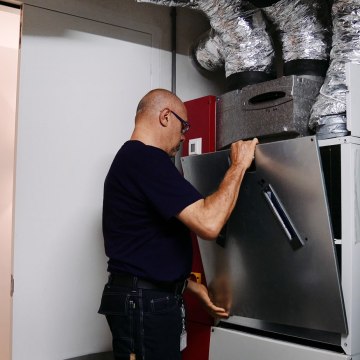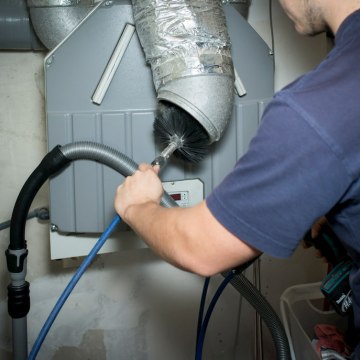

The ideal humidity in your home is between 40% and 60%. Not too dry, but not too humid either. Adequate humidity in your home is important for a healthy and comfortable indoor climate. But how do you get this humidity in your home? We explain exactly what humidity is, what the ideal humidity levels are and how to achieve it.


Humidity is a measure of the amount of moisture in the air. People often use relative humidity, which is expressed as a percentage. This is the ratio between the amount of water vapour in the air and the maximum amount of water vapour that can be in the air.
When there is a lot of water vapour in the air, the humidity is high, and vice versa, when there is little water vapour in the air, the humidity is low.
Temperature also plays an important role in humidity. The warmer the air, the more water vapour it can contain.
Humidity that is too high or too low can be uncomfortable at certain temperatures. In an aeroplane, humidity can drop by as much as 5%. This means you can lose up to 1.5 litres of moisture during a 3-hour flight. In the bathroom, humidity can rise to 100%, which can lead to mould growth.
The optimum level of humidity in your home is between 40% and 60%. You can easily measure the humidity in your home yourself with a hygrometer.
Poor humidity in your home can have several causes. For example, humidity levels are naturally lower in the winter months than in the summer. In summer, for example, air conditioning often makes the air drier.
Poor ventilation can also have an effect on humidity. An average family produces around 10 litres of moisture a day just by being in the house, cooking, washing and showering. If this is not properly ventilated, the result can be high humidity.
Insufficient humidity in the home can result in:
The following tips can be used to increase low humidity levels:
On the other hand, excessive humidity in the house is not desirable either. This can have the following consequences:
The following tips can be used to decrease high humidity levels:
Do you have questions about the humidity in your house? Then feel free to contact us, we will be happy to answer your questions. Want to know more about a comfortable indoor climate? Read our other blogs.





